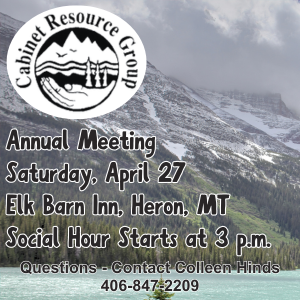Snowpack on track
Despite lack of snow, late fall storms boosted levels
January 17, 2019
It appears that Mother Nature is taking it easy on us this winter. After last winter’s abundant, record-setting snowfall, this year has seemed tranquil. This is only true for some areas, according to the National Resource and Conservation Service’s (NRCS) most recent data findings.
Surprisingly, early snowfall has been normal in regions along the Continental Divide in western and south-central Montana, according to NRCS Hydrologist Lucas Zukiewicz. “What’s been unique about this winter so far is that the snowpack in these regions would be below normal for this date if it weren’t for the storm that dropped significant totals during the last week of October into early November,” he stated.
“Many areas that were overlooked by the early November weather remain below normal for snowpack at this time, except for some regions of western Montana along the Idaho border which received heavy snowfall during the latter half of December,” added Zukiewicz.
USDA Forest Service Cabinet Ranger District Hydrologist Craig Neesvig works with Zukiewicz in monitoring the regions via snow telemetry (SNOTEL) station recordings and making site visits to snow courses in the region. According to Neesvig, the most representative SNOTEL sites are located at Bear Mountain (head end of Keeler Creek on the Montana/Idaho divide, west of Troy at 5,400 feet in elevation), Chicago Ridge (in the Rock Creek drainage, near Noxon at 5,800 feet) and Poorman Creek (south of Libby on the east side of the Cabinets at 5,100 feet). He added that Chicago Peak is a meteorological station, but serves as a SNOTEL. These stations are automated, electronic observers of snow depth, snow water equivalent (SWE), wind speed and direction, relative humidity, total precipitation (including rain), solar radiation and air temperature.
Neesvig stated that the most important factor in snowpack analysis is SWE, or amount of water contained in the snow. As of Monday, current SWE at Chicago Ridge was 16.4, which is 71 percent of the average for the end of January based on data collected since 2003. Snow depth at Chicago Ridge was 63 inches (85 percent of average for end of January).
Bear Mountain had a SWE of 24 and snow depth of 73 inches. Neesvig commented that although Bear Mountain is not as high in elevation as other SNOTEL station, it does tend to have more precipitation on an annual basis. He reported that Poorman Creek station’s operations went down on January 11, but on that date recorded 69 inches of snow and SWE was 16.
“SNOTELs around here are generally at the higher elevations, so they represent the high elevation snowpack,” Neesvig said. To represent lower elevations, there are snow courses he visits regularly. “The snow courses not only supplement SNOTEL information, but provide estimates for the middle and low elevation areas.” These courses are located at Chicago Ridge, Rock Creek Meadows and Government Saddle.
After analyzing data from the SNOTEL stations, it has been determined that overall, the Kootenai is at 88 percent of normal SWE and the Lower Clark Fork is at 95 percent. This time last year the sites measure at 85 and 74 percent respectively. The Columbia River Basin is at 92 percent of normal SWE and measured at 73 percent this time last year.
When it comes to temperature, December was above average across the state aside form the first week of the month when a cold arctic air blew in. On average, monthly temperatures were 3 to 7 degrees above average in northwest and north-central Montana and 1 to 3 degrees above average in southwest and south-central Montana.
Some people may be enjoying this break from winter weather, but Zukiewicz warns that “it’s the cold snowy weather during winter and spring that assures our water supply when it warms up in the summer.”
According to National Weather Service long-term weather forecasts, January is not promising for winter weather. Models are indicating a continued El Nino pattern, meaning warmer temperatures and below average precipitation. They indicate a 90 percent chance of El Nino occurring throughout the winter and 60 percent chance for continuation through spring.
“It should be noted that a single climate index to predict future snowfall before runoff isn’t always the best idea, as other climate conditions such as the Artic Oscillation can impact week-to-week weather patterns,” Zukiewicz said. “That being said, it would still be wise to keep this in mind as we get further into winter, as it will certainly play some role in the weather patterns over the coming months.”
Reservoir storage across the state is above average in many basins due to abundant runoff last spring and summer. Zukiewicz said this could prove to be important should the weather take a turn to the dry and warm side through the rest of winter.
The NRCS Montana Snow Survey will issue its next Snowpack and Water Supply Outlook on February 1 and updated information can be found by visiting http://www.nrcs.udsa.gov.






Reader Comments(0)